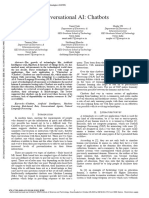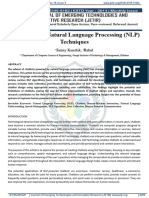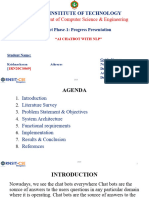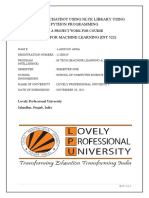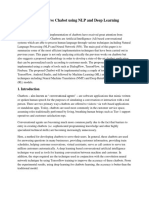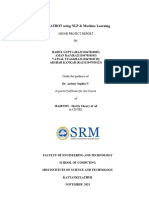0% found this document useful (0 votes)
58 views16 pagesChatbots: History, Types, and Uses
The document discusses chatbots including their definition, history, how they work, applications, advantages and disadvantages. Chatbots are software that develop interaction between users and computers via natural language. They can be rule-based or AI-based and work using pattern matching, natural language processing or neural networks.
Uploaded by
Kailasini ACopyright
© © All Rights Reserved
We take content rights seriously. If you suspect this is your content, claim it here.
Available Formats
Download as PDF, TXT or read online on Scribd
0% found this document useful (0 votes)
58 views16 pagesChatbots: History, Types, and Uses
The document discusses chatbots including their definition, history, how they work, applications, advantages and disadvantages. Chatbots are software that develop interaction between users and computers via natural language. They can be rule-based or AI-based and work using pattern matching, natural language processing or neural networks.
Uploaded by
Kailasini ACopyright
© © All Rights Reserved
We take content rights seriously. If you suspect this is your content, claim it here.
Available Formats
Download as PDF, TXT or read online on Scribd
/ 16




